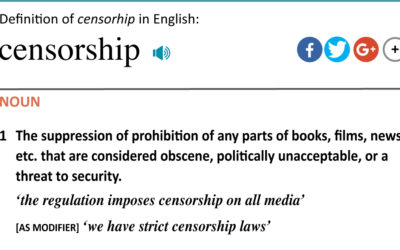Quick peek
In a rat feeding study,1,2 genetically modified (GM) Bt insecticidal corn caused altered blood biochemistry, organ damage (including damage to liver and kidney), and potential impacts on male fertility. The only difference in the GM corn versus the non-GM corn was the genetic modification. Thus the effects seen in the GM-fed rats were due to the GM process and not to other factors, such as differences in cultivation conditions.
At-a-glance
- In a medium-term rat feeding study, genetically modified (GM) Bt insecticidal corn caused altered blood biochemistry, multiple organ damage, and potential impacts on male fertility.
- Negative health impacts with relevance to humans include impaired kidney function and liver damage.
- The study was 45 or 91 days long, varying between the different animal groups studied.
- Toxicity studies in rats are accepted by regulators worldwide as indicators of toxicity to humans, so human relevance is unquestioned.
- The non-GM corn eaten by the control group was “isogenic” (had the same genetic background but without the genetic modification) to the GM corn and was grown in the same environmental and field management conditions; both were harvested at the same time. This means the effects seen in the GM-fed animals were due to changes in the corn caused by the genetic modification process and not by environmental factors.
- The study should be extended to long-term and multi-generational periods to see the full extent of the damage.
- This experiment tested a single-trait GM crop. However, most GM crops currently on the market contain multiple (“stacked”) GM traits. Future animal feeding studies should test these stacked-trait crops.
In-depth analysis
Study design
This study by Egyptian researchers was reported in two separate publications: Gab-Alla and colleagues (2012)1 and El-Shamei and colleagues (2012).2 In the study, rats were fed the genetically modified (GM) Bt insecticidal corn MON810: Ajeeb YG (a variety developed by Monsanto for the Egyptian market) for 45 and 91 days. The corn was engineered so that its tissues contain a Bt toxin insecticide intended to kill insect pests that feed on the crop.
Thirty male rats were divided into three feeding groups of 10 rats per group. The first group was fed a standard laboratory corn-containing diet. A second group – the control group – was fed a diet containing 30% of non-GM Ajeeb corn. The third group was fed a diet of 30% of GM MON810: Ajeeb YG corn. The GM and non-GM corn grains were milled into flour before being incorporated into the feed.
The body weight of each rat was recorded weekly. Animals were sacrificed and examined after 45 days and 91 days of feeding the different diets. Organs were weighed, blood samples taken, and serum analyzed. The results were written up in the first publication.1
Histopathological analysis (microscopic examination of tissues) was carried out on the liver, kidney, testes, spleen and small intestine of rats sacrificed at both time points to check for abnormalities. These results were written up in the second publication.2
Findings: Body and organ weights
The GM-fed animals showed differences in body and organ weights, compared with the control rats (see Tables 2 and 3 in the first publication1):
- From the seventh week of the experiment, the body weight of rats in the GM-fed group was lower than that of rats in the non-GM-fed and standard lab diet-fed groups.
- After 91 days of feeding, the heart weight was significantly higher in the GM-fed group than the non-GM-fed group.
- Kidney weight was significantly higher in the GM-fed group compared with non-GM-fed and standard lab diet groups, in both study periods. Liver weight was significantly higher in the GM-fed group than the non-GM-fed and standard lab diet groups, in the 91-day period.
- Spleen weight was significantly different in the GM-fed group in both study periods (at 45 days it was higher, and at 91 days it was lower compared with the other groups).
- Testes weight of the GM-fed group was lower than non-GM-fed and control groups after 45 days but no difference was found at 91 days.1
Such differences in body and organ weights can indicate that the GM diet was toxic. This was confirmed to be the case in the histopathological findings presented in the second publication.2
Findings: Differences in blood biochemistry
The GM-fed animals showed differences in blood biochemistry, compared with the control rats (see Tables 4 and 5 in the first publication1):
- Serum levels of uric acid, urea and creatinine (a waste product from breakdown of muscle tissue) were significantly higher in the GM-fed group compared with the non-GM-fed and standard diet groups, at both 45 and 91 days. These substances are measurements of kidney function. The higher levels in the GM-fed group suggest impaired kidney function.
- Serum levels of triglycerides (a type of fat) were significantly higher in the GM-fed group compared with the non-GM-fed and standard diet groups after both 45 and 91 days. High levels of blood triglycerides can lead to heart disease, high blood pressure, diabetes, obesity, or non-alcoholic fatty liver disease.
- Serum albumin, which is generated from the liver, was significantly lower in the GM-fed group in both study periods compared with the non-GM-fed and standard diet groups. This suggests compromised liver function.
- Serum levels of the liver enzyme ALP (alkaline phosphatase) were significantly higher in the GM-fed group in both study periods compared with the non-GM-fed and standard diet groups. Serum levels of the liver enzyme ALT (alanine transaminase) were significantly higher at 91 days in the GM-fed group compared with the non-GM-fed and standard diet groups. These changes in ALP and ALT imply liver structural damage in the GM-fed group, since these enzymes leak into the blood circulation when liver cells die and break up.
- Serum levels of VLDL (very low density lipoprotein) and LDL (low density lipoprotein) were significantly higher in both study periods in the GM-fed group compared with the non-GM-fed and standard diet groups. Such alterations in blood lipid (fat) levels can lead to a variety of disorders, including cardiovascular disease.1
The authors noted that these changes could indicate “potential adverse health/toxic effects”, which need further investigation.1
Findings: Histopathological abnormalities
The same group of researchers performed histopathological (microscopic) investigations of the rats fed over the 45 and 91-day study periods and reported the results in a separate publication.2 They found toxic effects in several organs of the rats fed the GM corn. Abnormalities found in the GM-fed animals (but not in the non-GM-fed or standard diet-fed animals) included:
- Vacuolation (formation of storage structures – for example, of fatty compounds) in liver cells, indicating liver damage
- Fatty degeneration of liver cells
- Congestion of blood vessels in kidneys and cystic malformations of kidney tubules – signs of possible impending kidney failure
- Excessive growth and necrosis (death) of intestinal structures called villi
- Examination of the testes revealed necrosis and desquamation (shedding) of the spermatogonial cells that are the precursors of sperm cells and thus the foundation of male fertility.2
The authors of the study concluded, “Due to these observations, we suggest that the risk of GM crops cannot be ignored and deserves further investigations in order to identify possible long-term effects, if any, of GM food consumption.”2
Q&A
Q: What is the relevance to human health?
A: Among the negative health impacts seen in the GM-fed rats that are relevant to humans were liver damage and impaired kidney function. Indications of liver damage included elevated serum triglycerides (a type of fat) and vacuolation (an abnormality consisting of the formation of storage structures) and fatty degeneration of liver cells. These are all signs of non-alcoholic fatty liver disease (NAFLD), a modern epidemic in humans that now affects one in three Americans. NAFLD is the most common form of liver disease in children and has almost doubled over the past 20 years.3 Chronic kidney disease affects 14% of Americans.4
The relevance to humans of the particular gut abnormalities found in the GM-fed rats is not known, except to say that excessive growth in the villi of the small intestine may pre-dispose a person to the onset of cancer. It is not known if the necrosis seen in the rats’ intestinal villi would translate in humans as a “leaky gut”, a condition involving intestinal permeability that some physicians link to inflammatory diseases.
Q: What caused the effects seen in the GM-fed rats?
A: In line with best practice for GMO feeding trials, the non-GM control corn was “isogenic” to the GM corn. “Isogenic” means having the same genetic background as the GM corn but without the genetic modification. Moreover, the two corn varieties were grown at the same time and under the same conditions, with the same field management practices.5 This means that the changes seen in the GM-fed rats were due to changes in the corn caused by the genetic modification, and not by different environmental conditions or field management practices during cultivation.
It is not known, however, whether the toxicity found from the consumption of the GM corn was due to the presence of the introduced Bt toxin or to some unintended changes brought about by the GM process. This is a limitation common to the vast majority of animal feeding studies that find harm from GMOs. For example, animal feeding studies on GM Bt crops are not designed to distinguish between toxicity arising from the Bt toxin and from other components of the GM crop that have been unintentionally altered by the GM transformation process.
In order to distinguish between whether the toxicity observed is due to the engineered Bt toxin or GM process-induced changes, a group of animals consuming a diet consisting of the non-GM corn with added Bt toxin at the same level as that found in the GM corn would need to be included. In addition, to ensure equivalence to the GM diet, this would require that the Bt toxin be isolated from the GM corn and then added to the non-GM corn. Such isolation of the GM Bt toxin is difficult, which is why such a control group is not included in animal feeding studies.
Q: How do the findings relate to those of other studies?
A: The abnormalities in the intestinal villi of the GM-fed animals are in line with the findings of other studies. For example, in one study, mice fed GM Bt potatoes had excessive cell growth and cellular abnormalities in the villi of the small intestine (Fares and El-Sayed, 1998).6 In another study, rats fed GM potatoes expressing a different insecticidal protein (Galanthus nivalis lectin or GNA for short) had excessive cell growth in the small and large intestines (Ewen and Pusztai, 1999),7 suggestive of a pre-cancerous condition.
Signs of liver and kidney toxicity were also identified in a review of 90-day industry-sponsored rat feeding studies on two GM Bt corn varieties (De Vendomois and colleagues, 2009).8 And in a three-generation study, rats fed GM Bt corn showed damage to liver and kidneys and alterations in blood biochemistry (Kilic and Akay, 2008).9
Q: Doesn’t the EU-funded GMO90+ study contradict the findings of this study?
A: An EU-funded study (Coumoul and colleagues, 2018) called GMO90+ tested GM MON810 corn in Wistar rats over a 6-month period and reported “no adverse effect” from the GM diet, compared with the non-GM isogenic variety.10
However, this study10 is different in design and interpretation from the study by Gab-Alla and colleagues1 and El-Shamei and colleagues2 and thus is not comparable. First, regarding design, although the two studies evaluated GM corn with the same GM transformation “event” (MON810), this was present in different background genetics of the corn varieties, which means that they are not comparable. Thus the results obtained from one study do not “cancel out” the results from the other.
Second, and most crucially, the difference in interpretation is that in the EU-funded study, a number of statistically significant differences were found in the GM-fed rats, but the authors dismissed them as not biologically relevant, without scientific justification.10 In reality, the only way to know if these changes were biologically relevant is to extend the study length beyond 6 months to two years or more. This would give time for any long-term health effects to fully manifest. In contrast, and in line with good scientific practice, Gab-Alla and colleagues1 and El-Shamei and colleagues2 did not dismiss significant differences in the GM-fed rats, but took them seriously.
In addition, in the EU-funded study, all of the feeds used, including the control feeds, were equally contaminated with residues of the herbicide ingredient glyphosate.10 This could add “data noise” to the results, meaning that any changes due to the GM element of the diet might have been masked.
Q: What are the limitations of the study length?
A. The study investigated the health of the rats over two periods: 45 days and 91 days. The latter is equivalent to only around 9 years in a human.11 Significant damage to the GM-fed rats’ organs was found even in this relatively short period. However, people could eat a GM food over their entire lives, so long-term (2-year) animal feeding studies should be carried out to see if the changes found in the GM-fed rats in this experiment develop into even more serious illness or shortened lifespans.
Q: Was there an adequate number of rats in the study?
A: There is no agreed standard for the numbers of rats that should be included in each group in GMO feeding studies. However, the number used in this experiment (10 per group) is comparable to that in studies that are often used to claim that GMOs are safe.12 It is also comparable to the number (typically varying between 5 and 20) used by GMO companies in studies to support regulatory approvals.13
The Organisation for Economic Cooperation and Development (OECD), which sets international standards for the animal testing of chemicals to support regulatory approvals, recommends 20 animals per sex per group for a medium-term toxicity study of the length of this one. However, only 10 animals per sex per group (50%) have to be analyzed for blood and urine chemistry14 – the same number that were analyzed in this study. Thus the study gathered data from the same number of rats as the OECD norm, but unlike the OECD recommendation, 100% of the animals were analyzed. This is a superior methodology to analyzing only 50% of animals, as “selection bias” (choosing which animals to analyze or record data from) is impossible.
Q: All the rats tested were male. Is this a limitation?
A: Ideally both sexes should be included, as GM corn has been found in industry-sponsored feeding studies to affect males and females in different ways.8 However, this study in males only still gives valuable information.
Q: Is the GM crop tested in this experiment typical of GM crops on the market today?
A: This experiment tested a single-trait GM crop, but most GM crops currently on the market contain multiple (“stacked”) traits – for example, several different Bt toxins and genes conferring herbicide tolerance. Future animal feeding studies should focus on the newer stacked trait crops, grown with the herbicides and other chemicals that are typically used in the cultivation cycle.
References
1. Gab-Alla AA, El-Shamei ZS, Shatta AA, Moussa EA, Rayan AM. Morphological and biochemical changes in male rats fed on genetically modified corn (Ajeeb YG). J Am Sci. 2012;8(9):1117–1123. https://www.academia.edu/3138607/Morphological_and_Biochemical_Changes_in_Male_Rats_Fed_on_Genetically_Modified_Corn_Ajeeb_YG_. Accessed January 14, 2014.
2. El-Shamei ZS, Gab-Alla AA, Shatta AA, Moussa EA, Rayan AM. Histopathological changes in some organs of male rats fed on genetically modified corn (Ajeeb YG). J Am Sci. 2012;8(10):684–696. https://www.academia.edu/3405345/Histopathological_Changes_in_Some_Organs_of_Male_Rats_Fed_on_Genetically_Modified_Corn_Ajeeb_YG_. Accessed January 14, 2014.
3. American Liver Foundation. ALF NAFLD and NASH Overview 2018.; 2018. https://liverfoundation.org/for-patients/about-the-liver/diseases-of-the-liver/non-alcoholic-fatty-liver-disease/.
4. National Institute of Diabetes and Digestive and Kidney Diseases. Kidney disease statistics for the United States. niddk.nih.gov. https://www.niddk.nih.gov/health-information/health-statistics/kidney-disease. Published 2016. Accessed February 18, 2019.
5. Shatta AA, Rayan AM, El-Shamei ZS, Gab-Alla AA, Moussa EA. Comparative study of the physicochemical characteristics of oil from transgenic corn (Ajeeb YG) with its non-transgenic counterpart. Austin Food Sci. 2016;1(5):1023. http://austinpublishinggroup.com/food-sciences/fulltext/afs-v1-id1023.php. Accessed February 3, 2019.
6. Fares NH, El-Sayed AK. Fine structural changes in the ileum of mice fed on delta-endotoxin-treated potatoes and transgenic potatoes. Nat Toxins. 1998;6(6):219-233. http://www.ncbi.nlm.nih.gov/pubmed/10441029.
7. Ewen SW, Pusztai A. Effect of diets containing genetically modified potatoes expressing Galanthus nivalis lectin on rat small intestine. Lancet. 1999;354(9187):1353-1354. doi:10.1016/S0140-6736(98)05860-7
8. De Vendomois JS, Roullier F, Cellier D, Séralini GE. A comparison of the effects of three GM corn varieties on mammalian health. Int J Biol Sci. 2009;5:706–26. http://www.ncbi.nlm.nih.gov/pubmed/20011136 http://www.biolsci.org/v05p0706.htm.
9. Kilic A, Akay MT. A three generation study with genetically modified Bt corn in rats: Biochemical and histopathological investigation. Food Chem Toxicol. 2008;46:1164–70. doi:10.1016/j.fct.2007.11.016
10. Coumoul X, Servien R, Juricek L, et al. The GMO90+ project: absence of evidence for biologically meaningful effects of genetically modified maize based-diets on Wistar rats after 6-months feeding comparative trial. Toxicol Sci. 2018. doi:10.1093/toxsci/kfy298
11. Sengupta P. The laboratory rat: Relating its age with human’s. Int J Prev Med. 2013;4(6):624-630. https://www.ncbi.nlm.nih.gov/pmc/articles/PMC3733029/. Accessed January 13, 2019.
12. Snell C, Aude B, Bergé J, et al. Assessment of the health impact of GM plant diets in long-term and multigenerational animal feeding trials: A literature review. Food Chem Toxicol. 2012;50(3–4):1134-1148. http://www.sciencedirect.com/science/article/pii/S0278691511006399.
13. Ricroch AE, Boisron A, Kuntz M. Looking back at safety assessment of GM food/feed: an exhaustive review of 90-day animal feeding studies. Int J Biotechnol. 2014;13(4):230-256. doi:10.1504/IJBT.2014.068940
14. Organisation for Economic Cooperation and Development (OECD). OECD guideline no. 408 for the testing of chemicals: Repeated dose 90-day oral toxicity study in rodents: Adopted 21 September 1998. 1998.


